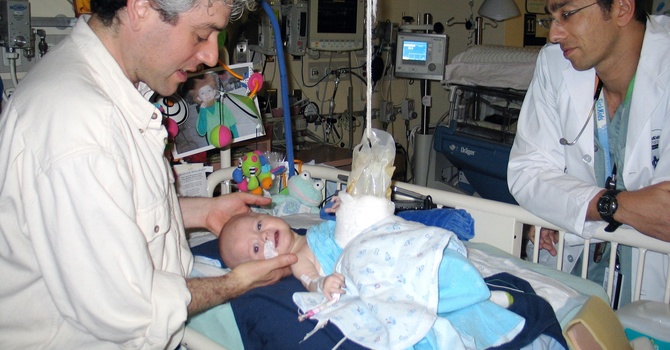Craniosacral Therapy is an extremely gentle hands-on body-mind technique for evaluating and treating a variety of soft tissue, neurological and psychosomatic problems.
Craniosacral therapy is particularly helpful in situations of trauma, such as car accidents, head injuries, and surgery, and difficult births. Conditions unrelieved by more conventional methods are often relieved through Craniosacral therapy. It is used either on its own or in combination with other forms of bodywork, such as visceral manipulation, myofascial release, joint mobilization, accupressure, massage, and psychotherapeutic bodywork, where appropriate.
The focus of therapy is on the nervous system rather than the muscles or joints. Specifically, Craniosacral therapy addresses the connective tissue wrapping that surrounds the brain and spinal cord, forming the immediate environment of the central nervous system known as the meninges or dural tube. These structures, together with cerebrospinal fluid and the bones of the cranium and face, the spinal column and sacrum, have been described as the Craniosacral system. These structures form the core of your being. Because the dural tube is continuous from the sacrum to the brain, and because connective tissue is continuous throughout the body, stress anywhere in the body can restrict normal motion of the dural tube, resulting in inefficient movement , a deficit of coordination, mental and emotional disorder, and pain, sometimes quite distant from its source
This method of kinesthetic (in contradistinction to tactile) palpation can be taught to anyone who can be still enough to attend to the subtle but definite motions involved.
Treatment is also done through this same method of light kinesthetic palpation, applied with less than 5 grams of pressure, approximately the weight of a nickel. Such light touch is remarkably effective at moving tissues given enough time. The therapy works in part by inducing a state of relaxation deeply enough to allow the client's own self-corrective neuromuscular processes occur.
In this sense Craniosacral Therapy can be viewed as a form of biofeedback. The therapist, connected through touch to the client, responds to faint kinesthetic motion signals, and amplifies them to make the client more aware of the movements which allow self healing to occur.
Facilitation of self healing through this mechanism is, to greater or lesser degrees, afforded through many systems of bodywork, including Chiropractic Physiotherapy, Shiatsu, and Swedish Massage. Craniosacral Therapy is among the most gentle of these systems, related most to Myofascial Release, Strain / Counterstrain (positional release), Therapeutic Touch and the techniques of Cranial Osteopathy.
The theories proposed to explain the Craniosacral rhythm and its relationship to self healing have received a great deal of attention in the last few years, and have ranged from traditional mechanistic understandings focussed on a pressurestat model of cerebrospinal fluid balance and its relationship to normal neuromuscular function, to those associated with transpersonal psychology and theories radically unconnected to the mainstream of scientific understanding.
What is certain is that Craniosacral Therapy works for many acute and plateaued cases in which more invasive therapies have failed, and that many who have experienced this therapy describe profound kinesthetic, emotional, cognitive and spiritual transformations occurring during sessions. What mechanisms or principles truly inform such phenomena is fertile ground for further research.
Craniosacral therapy is taught as a postgraduate course to Doctors, Chiropractors, Massage Therapists, Physiotherapists, Dentists, and Psychotherapists by the Upledger Institute, an educational and treatment centre founded by the American Osteopathic physician John Upledger. As a modality it is what distinguishes osteopathy from these other approaches.
Mark Levine is clinical director of Mark Levine, B.A. R.M.T., Pediatric + Family Manual Therapy, providing craniosacral and osteopathic manual therapy services to infants, children and adults for a wide variety of physical, emotional, neurological and trauma related concerns.
This article was originally published 2008, updated 2024
Copyright Mark Levine 2024
info@marklevine.ca
Mark Levine
Contact Me

